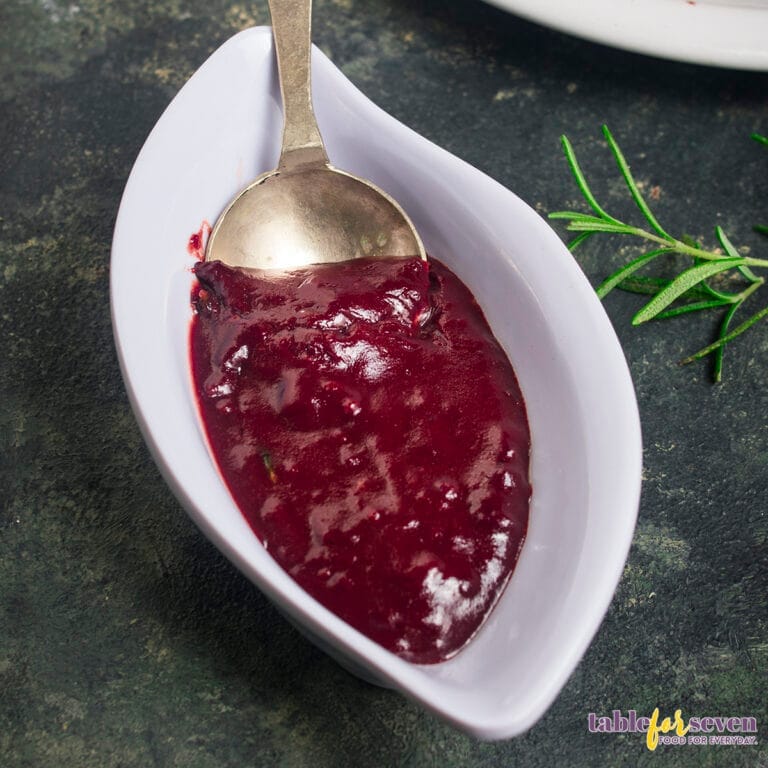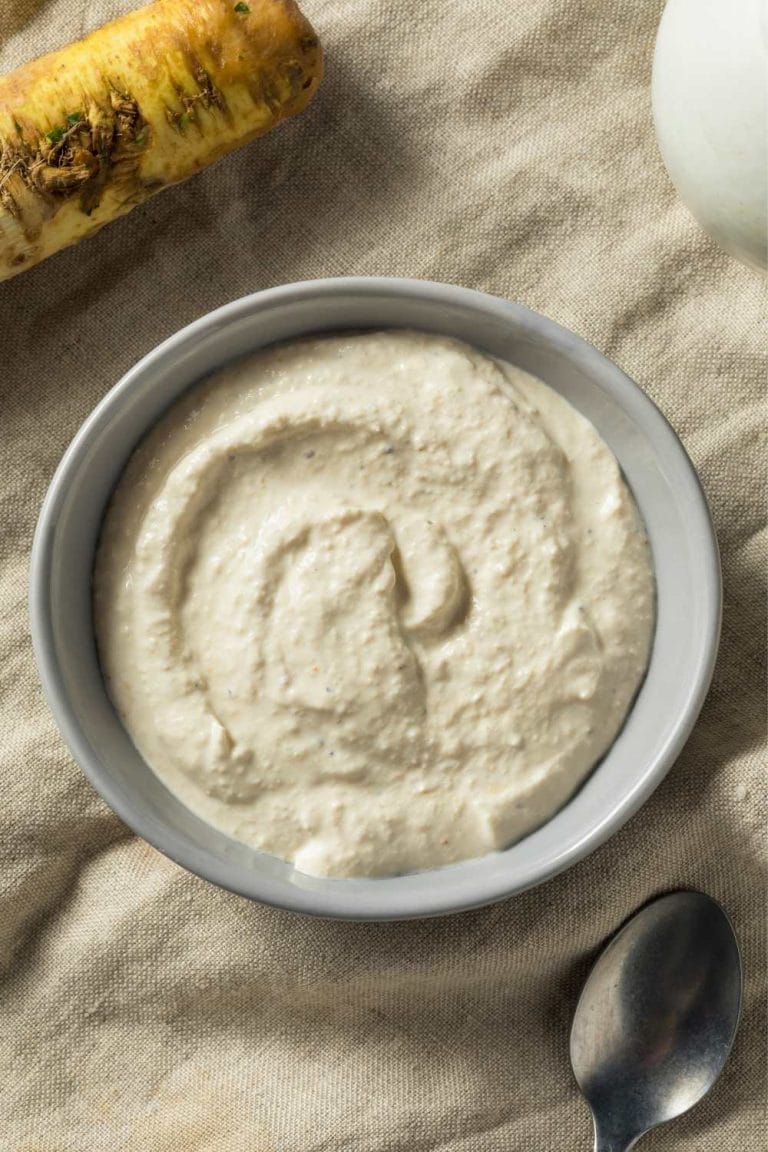Jamie Oliver Parsley Sauce
This recipe for Parsley Sauce by Jamie Oliver is really straightforward to prepare and goes wonderfully with ham, seafood, or vegetables.
Various people have different ideas about what constitutes “parsley sauce,” but when I think of parsley sauce, I think of this British-style parsley sauce made with cream and a dash of mustard. Flavors fish, white poultry, and pork wonderfully.

What Is Parsley Sauce?
Parsley sauce is nothing more than a white or béchamel sauce to which heaps of fresh chopped parsley have been added. It’s at its finest when it’s rich, flavorful, and crisp. It goes well with steamed vegetables, gammon, fishcakes, and white fish.
Jamie Oliver Parsley Sauce Ingredients
- Butter – Whether salted or unsalted, either is OK.
- Flour – white flour, either simple or self-rising, normal or gluten-free (but not strong bread flour).
- Milk – It makes no difference whether the milk is whole, skimmed, or semi-skimmed.
- Fresh Parsley – Make do with the leaf you’ve got, whether it’s flat or curly.
Optional:
- English Mustard – adds a touch of heat, and pairs wonderfully with ham in a parsley sauce.
- Lemon – pairs well with fish and gains depth of flavor when combined with parsley.
- Cream – Adding more cream at the end makes for a more decadent sauce, perfect for special occasions.

What Goes With Parsley Sauce?
Cod or haddock, or any other white fish, or even salmon, can be served with a homemade parsley sauce. The fish can be poached, baked, or poached and then baked. It may also be used to make fishcakes or a fish pie, both of which are delicious.
It is also customary to serve a roast ham with a sauce made of parsley. You could also make a gratin out of vegetables using this.
How To Make Jamie Oliver Parsley Sauce?
- Remove the majority of the stalks from the parsley and finely cut it.
- In a medium saucepan over medium to low heat, melt the butter. When the butter has melted, stir in the flour.
- Stir in the flour until it forms a thick paste or roux. Then cook for a few minutes, stirring constantly. Thoroughly cook the roux. Otherwise, the sauce may have a floury flavor.
- Begin gradually adding the milk, a little at a time, stirring thoroughly after each addition to form a smooth paste. You can add more milk when the mixture thickens into a sauce.
- Simmer for a few minutes to allow the sauce to thicken. Continue to stir constantly. To ensure uniform consistency and avoid burning, scrape the edges and bottom of the pan where the sauce will thicken faster.
- Season with pepper and salt to taste and stir in the finely cut parsley. If you’re using mustard, lemon, or cream, add them now.
- In the pan, the sauce will remain heated for 15-20 minutes. If you need to leave it for a longer period of time, add a circle of buttered parchment or greaseproof paper on top to prevent skin from developing.
Recipe Variations
Use any of your favorite leafy green herbs in place of the parsley in this sauce and you won’t be disappointed. You can use tarragon, chervil, coriander (cilantro), or a mixture of these herbs. It is even possible to utilize carrot tops in this recipe.
You may replace up to half of the milk with the ham stock if you’re cooking this to go with boiling ham or gammon. (Try a small amount first to make sure you like the flavor; ham stock is sometimes rather salty.)
Using the milk from poaching the fish to make the sauce is a great way to ensure a consistent flavor throughout. Top a gratin with some finely shredded strong cheese, such as cheddar, grana Padano, or parmesan.

How To Store Parsley Sauce?
Any extra parsley sauce can be stored in the fridge for up to five days if stored in a sealed container. Reheat it on low, adding extra milk if necessary, until ready to use.
If you ask me, freezing it will ruin the texture. Making a new batch from scratch is always the best option. Brighter colors will be used.
If you find yourself with a surplus of parsley, just bag it or box it up and place it in the freezer. Refreeze the pieces as soon as possible after cutting. The sixth step, as described above, is to add this ingredient to the sauce.
Recipe Tips
- Making sure the roux (flour and butter) is cooked thoroughly is essential to avoiding a flour flavor in the finished sauce.
- As a precaution against lumps forming, add the milk very gradually, a few drops at a time, while stirring constantly.
- Adding extra milk and simmering the sauce should fix the problem if it’s too thick.
- The sauce can be thickened by adding a slurry or paste made from a teaspoon of cornflour (cornstarch) and a little milk, which should be added to the sauce, stirred in and cooked for a few minutes longer if necessary. And if it doesn’t work, try again.
- There isn’t enough flavor for dried parsley to work in this sauce. In my opinion, freezing parsley is the best option. Drying it out ruins it.
- In a jar of water in the fridge, freshly cut parsley will keep for up to a week. A plastic bag placed loosely over it might help it survive even longer. This will prevent the leaves from losing their moisture. Similarly, it may be frozen.
FAQ Section
Is It Possible To Freeze Parsley Sauce?
You can, but I don’t recommend it. Fresh is far superior. You may make it ahead of time and store it in the fridge if necessary.
Is It Possible To Make Gluten-free Parsley Sauce?
Yes, simply substitute ordinary gluten-free flour for regular flour!
Is This Similar To Parsley Liquor?
No. The ancient London eel and pie establishments’ parsley liquor, or ‘licker,’ is prepared using stock rather than milk.
Is It Possible To Make Vegan Parsley Sauce?
Yes, use a dairy-free spread and milk.

Jamie Oliver Parsley Sauce
Ingredients
- 1 handful of fresh parsley
- 2 tablespoons butter
- 3 tablespoons flour
- 1 cup milk
- salt and pepper to taste
Optional
- 1 teaspoon mustard
- 1 tablespoon double cream
- 2 teaspoons lemon juice
Instructions
- Remove the majority of the stalks from the parsley and finely cut it.
- In a medium saucepan over medium to low heat, melt the butter. When the butter has melted, stir in the flour.
- Stir in the flour until it forms a thick paste or roux. Then cook for a few minutes, stirring constantly. Thoroughly cook the roux. Otherwise, the sauce may have a floury flavor.
- Begin gradually adding the milk, a little at a time, stirring thoroughly after each addition to form a smooth paste. You can add more milk when the mixture thickens into a sauce.
- Simmer for a few minutes to allow the sauce to thicken. Continue to stir constantly. To ensure uniform consistency and avoid burning, scrape the edges and bottom of the pan where the sauce will thicken faster.
- Season with pepper and salt to taste and stir in the finely cut parsley. If you’re using mustard, lemon, or cream, add them now.
- In the pan, the sauce will remain heated for 15-20 minutes. If you need to leave it for a longer period of time, add a circle of buttered parchment or greaseproof paper on top to prevent skin from developing.
Notes
- Making sure the roux (flour and butter) is cooked thoroughly is essential to avoiding a flour flavor in the finished sauce.
- As a precaution against lumps forming, add the milk very gradually, a few drops at a time, while stirring constantly.
- Adding extra milk and simmering the sauce should fix the problem if it’s too thick.
- The sauce can be thickened by adding a slurry or paste made from a teaspoon of cornflour (cornstarch) and a little milk, which should be added to the sauce, stirred in and cooked for a few minutes longer if necessary. And if it doesn’t work, try again.
- There isn’t enough flavor for dried parsley to work in this sauce. In my opinion, freezing parsley is the best option. Drying it out ruins it.
- In a jar of water in the fridge, freshly cut parsley will keep for up to a week. A plastic bag placed loosely over it might help it survive even longer. This will prevent the leaves from losing their moisture. Similarly, it may be frozen.





This was lovely and creamy.